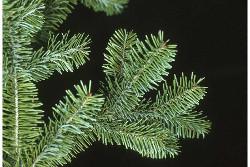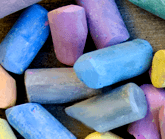MAKE YOUR OWN “SECRET” WET-ON-WET MEDIUM
Wet on Wet, or alla prima (“first attempt”) painting has become increasingly popular, with plein air (“in the open air”) painters taking the lead. In the recent past, artists with television shows developed their own wet-on-wet techniques, and even their own brands of “secret” mediums. Their secret mediums were promoted as making it possible to paint full landscapes in as little as thirty minutes.
Even though the ingredients of these secret mediums is not available to the public, the general consensus is that they are simply made from linseed oil, titanium white, and some petroleum-based thinner such as mineral spirits or OMS. The linseed oil in this mixture allows you to wet the surface of the canvas, so that it will not dry too fast. The thinner is what makes it flow free for the “wet effect”. Titanium white increases opaqueness. Oil paints are almost always made with pigment and linseed oil, and any secret ingredient besides the historical basics, including mineral spirits, might be questionable.
Artists are probably better off making their own mediums, rather than buying an unknown substance. Knowing your materials, and the effect they have is always preferable to relying on the “magic” medium that will supposedly make you a better painter. There are probably as many art medium possibilities as there are artists…
1) You could simply recreate the secret wet-on-wet formula with the same readily available ingredients. The primary drawback, of course, is the petroleum-based thinner (mineral spirits or OMS).
2) You could create a medium using Oil of Spike Lavender and Linseed Oil. This would wet the surface, increase the paint adherence between layers – and no mineral spirits would be used. Titanium white is optional – depending on the quantity, it would add a bit of thickness, as well as opaqueness.
3) You could actually create a whole range of your own specialized custom mediums by selecting from one or more of the following categories…
A DRYING OIL: Linseed, Walnut, Safflower, Water-Washed Linseed/Walnut
A THINNING OIL: Spike Lavender, Rosemary, Biobased-Artist, White Fir
A RESIN: Canada Balsam, Damar, Copal
This may be more than some artists want to get into at this point. However, it may be helpful to gain a perspective on the full picture of possibilities. Wet-on-wet techniques have been used throughout the history of art, from the Van Eycks to Sargent, Van Gogh and Willem de Kooning. Experimenting with these various mediums can really be enjoyable, and it can give you an in depth understanding of what you are doing at the level of paint on the canvas.




